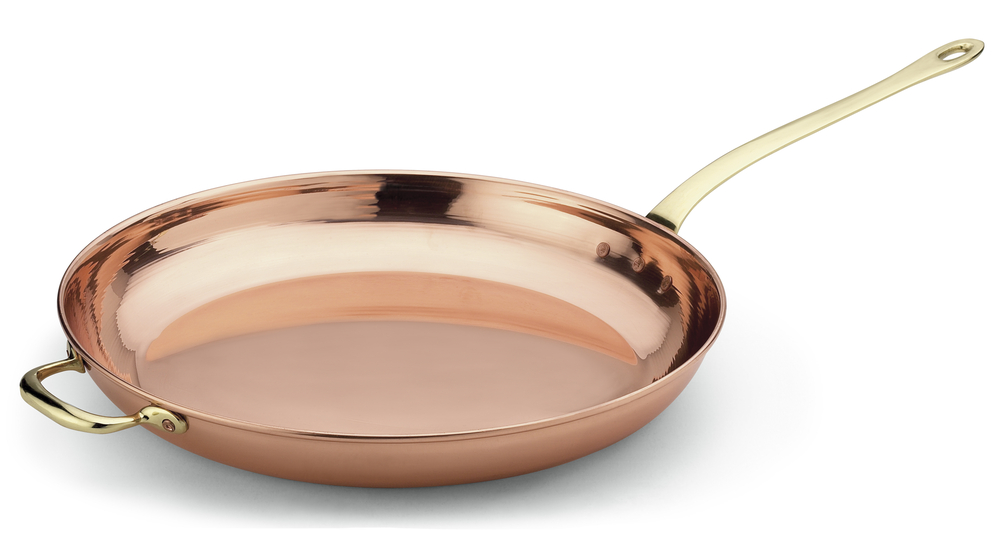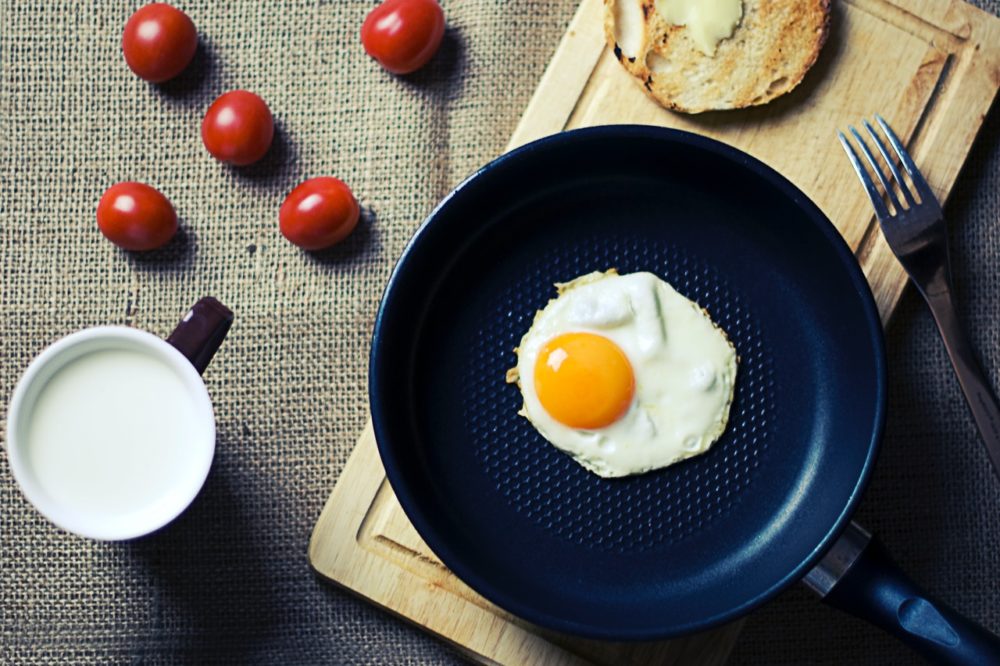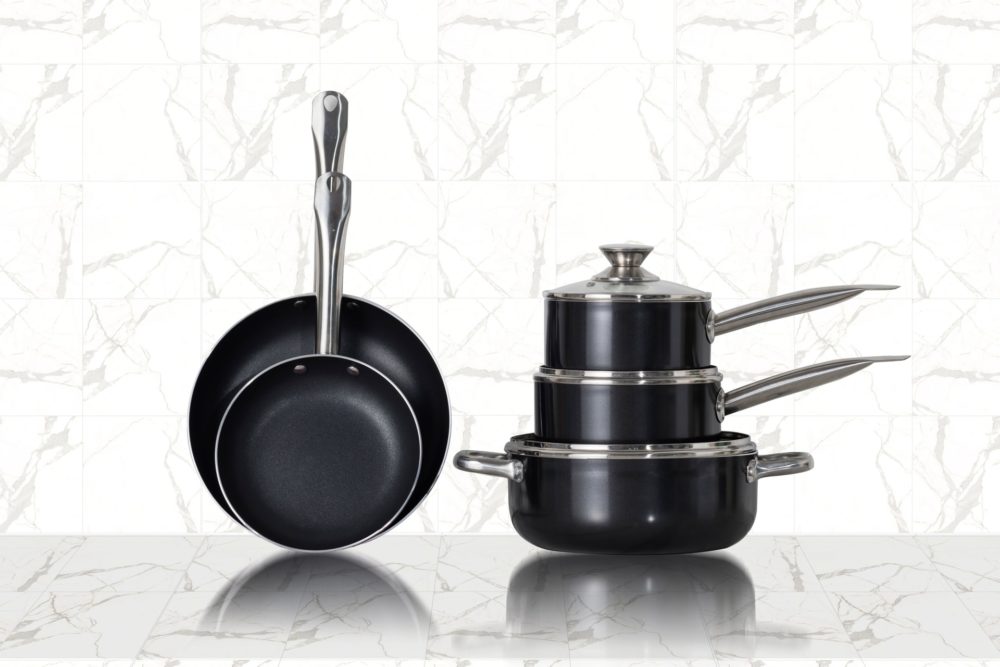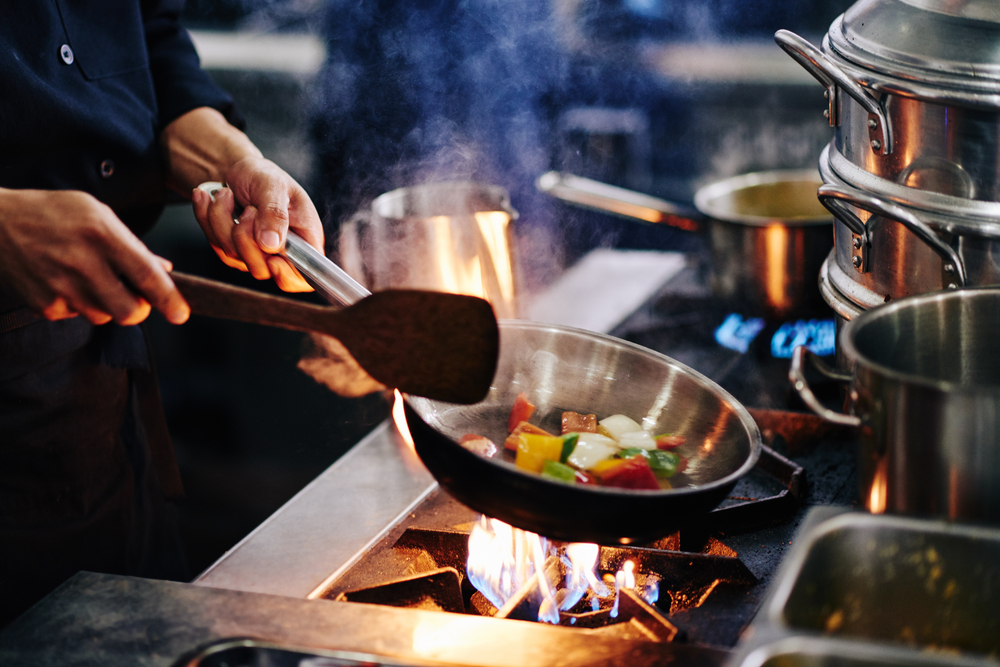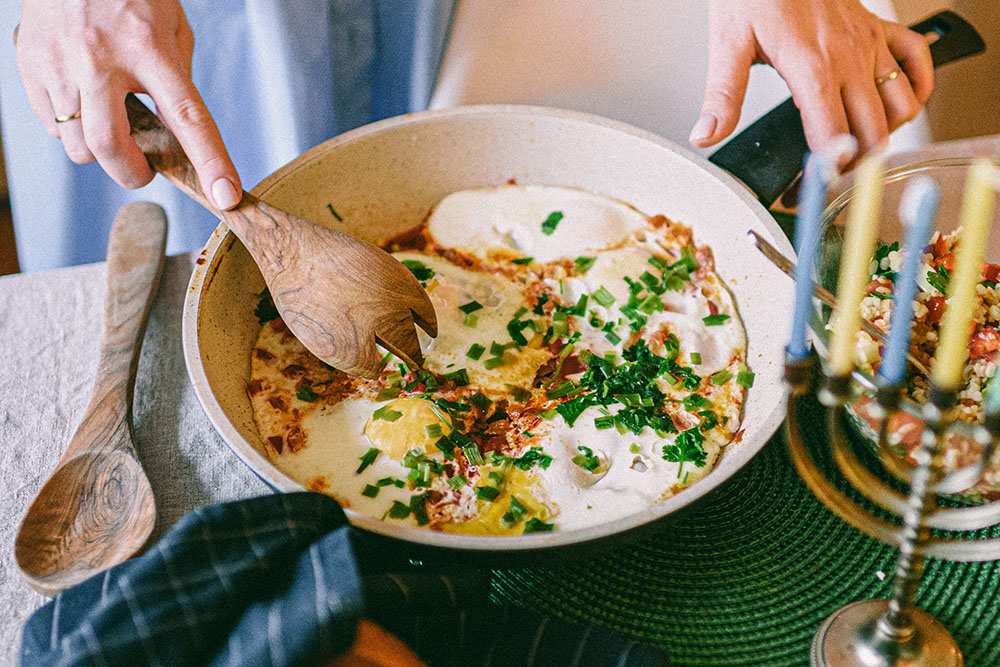Is there a sight more homely than burnished copper pans hanging over an Aga? If there is, I’ve yet to see it.
Copper pans are very much in vogue now but copper is actually the oldest metal worked by human hands.
The Egyptians were the first to shape it into bowls around the same time they constructed the pyramids.
It wasn’t for another few thousand years that copper was used for cookware. We know the Romans were using it this way for sure.
Nowadays, copper cookware is like the creme de la creme of the cookware world. The image of a Parisian chef clattering around with their copper pots just screams, cultured.
Unfortunately, as with most in vogue items, copper pots are pretty darn expensive. If you are lucky enough to own some then you’ll definitely want to know how to keep them in top condition.
If you’re thinking of investing in some copper pots then you’ll also be curious about how they can be used safely in the kitchen.
That brings us nicely to our question: Are copper pots oven safe?
Let’s take a look.
Properties of Copper
Before we answer the question, it’s helpful to know and understand what copper actually is and how come it ended up in the kitchen.
As you may remember from high school physics, copper is an excellent conductor. It carries heat and electricity quickly and efficiently.
The electrical conductivity of copper is why we use it in wiring throughout our homes and appliances. The excellent heat conductivity is what makes it great in the kitchen.
Copper pans are sort of the opposite to cast iron pans. Copper heats up quickly and evenly but once removed from the heat the temperature drops rapidly.
Cast iron, on the other hand, is slow to heat up but when it does get hot, it stays hot.
Because copper is so responsive to heat, it is ideal for cooking more delicate foods like fish, seafood, caramel, and sauces. Essentially, anything that could burn easy will do well in a copper pot.
The major issue with copper cookware, aside from the cost, is that it is reactive. This means that acidic substances like vinegar or citrus can break down the copper and suck it into your food.
Now, a little bit of copper isn’t an issue, but continued overexposure to copper can affect your health. Because of this, most copper pans are lined with another metal, often stainless steel.
The stainless steel lining is usually super thin so it doesn’t affect the heat conduction. If this lining breaks away from the copper then you’re usually out of luck. It’s very difficult to reattach these two metals.
Can Copper Pans go in the Oven?
Now that we know a bit more about copper, let’s return to our burning question.
Are copper pans oven safe?
Well, yes, they are to an extent. A lot depends on the quality of the pan and the manufacturer’s guidelines.
Handles and Lids
The first thing you need to consider before popping your pan in the oven is the handle and lid material.
Copper pans tend to have copper or other metal handles. However, some may have a heatproof plastic coating.
Do not put a pan with a rubber or coated handle into the oven. You will end up melting it! Heatproof is better termed as heat resistant. It has a lower melting point than metal and will end up as a goopy mess on the bottom of your oven.
Similarly, check any lids you intend to use in the oven for rubber or heat proof handles.
While you’re checking the lid, make sure that they are not made of glass. If you put a glass lid in the oven, it is liable to crack or shatter.
Like the handle coating, glass can’t withstand the same temperatures as the copper pan.
Maximum Temperatures
When you buy your pans you should notice that the manufacturer states the maximum temperature the pan can withstand.
In true copper pans, the maximum oven safe temperature is usually between 400°F - 500°F. If you exceed these temperatures, your pan might break.
Always stick to the manufacturer’s guidelines. That way if there is a fault with your pan you should be able to take advantage of the warranty.
Plus, they made the pan, they know what they’re talking about!
True Copper V Copper Lined
Not all copper-colored pans are actually made from copper. You need to know what your pan is made from because it impacts how you can use your pan.
Copper-colored pans are usually made from aluminum and are painted to look like copper. They tend to have a ceramic Teflon cooking surface.
Sometimes product listings can be misleading but there are two ways to tell if the pans are really copper or not.
Firstly, the price. Copper pans won’t cost less than $100. A set of copper pans can cost you more than double that.
If you see pans labeled as copper but with a double-digit price tag, they are more than likely copper-colored.
The second way to tell is if the listing says the pans are non-stick.
Copper pans are, as we’ve mentioned, coated in stainless steel to limit the reactivity. Stainless steel is an infuriatingly sticky material. You won’t see real copper pans listed as non-stick.
If a product has copper and non-stick in the label then it is likely an aluminum pan with a ceramic or Teflon cooking surface.
These, for want of a better word, knock off pans, can be oven safe. Again, you need to look at the listing and find the manufacturer’s listed maxim oven-safe temperature.
Considerations
If you do put your copper pan in the oven, there are a few things to remember.
Firstly, the pan and handles will get extremely hot. Always use an oven mitt when taking them out of the oven.
When you place the pan on the countertop, make sure the handle is facing towards the wall. That way you won’t accidentally walk into or brush against it.
Another issue with extremely hot pans is that you might burn your food if you don’t adjust the cooking times.
Steel, iron, or aluminum pans take longer to heat up which means the food is not exposed to a hot cooking surface for quite so long.
Copper pans heat up nearly instantly. You will need to keep a close eye on your food to prevent it from scorching.
Finally, you’ll need to let your pan cool down slowly and naturally. Copper is a softer metal that can be wrapped by thermal shock.
Thermal shock occurs when a material experiences drastic temperature changes. If you dump your pan in a sink of cold water as soon as it’s empty, it will probably warp out of shape.
Final Thoughts
Copper pans are expensive and if you’re lucky enough to own some, you’ll want to protect your investment.
While copper pans are generally oven safe, you need to stick to the manufacturer’s guidelines and take care when cooking and cleaning them.
With the right love and attention, copper pots can last years in the kitchen. They can serve up culinary delights to generations. Treat them well and they’ll feed you well.

